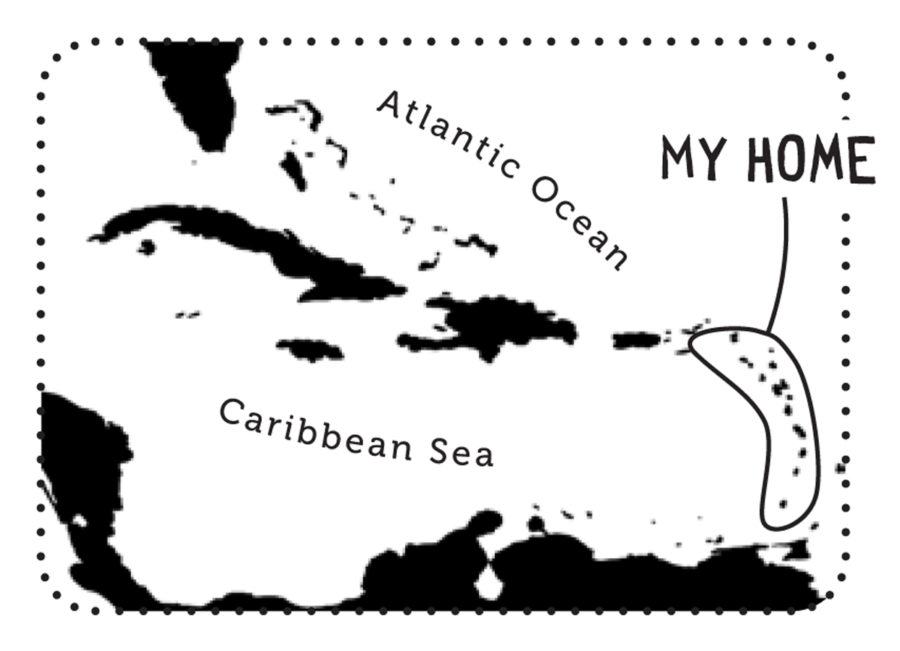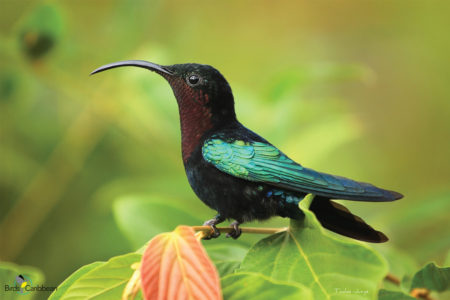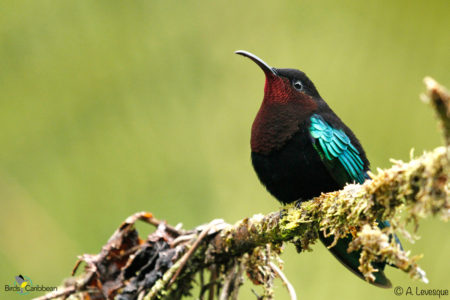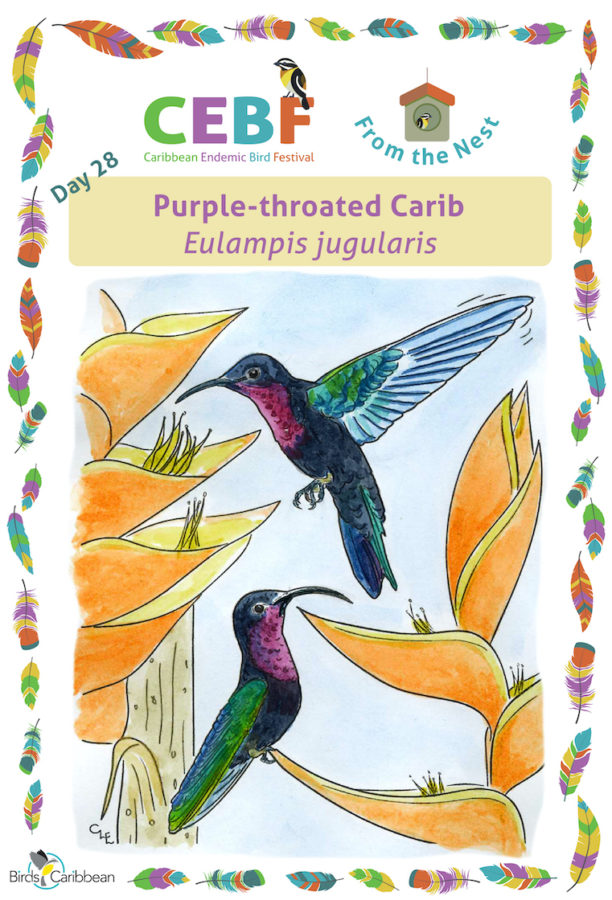Celebrate the Caribbean Endemic Bird Festival (CEBF) with us in our virtual “From the Nest” edition! Have fun learning about a new endemic bird every day. We have colouring pages, puzzles, activities, and more. Download for free and enjoy nature with your family at home.
Endemic Bird of the Day: Purple-throated Carib
 When you think purple throat, you wouldn’t expect that the most obvious field mark for this large hummingbird is it’s accentuated, emerald green wings! Coming in at a whopping 5 inches, this hummingbird tends to appear completely black except for its wings. Try golden hour, with the perfect lighting and the right angles and it transforms before the eyes, living up to its name. The regal purplish-red of its throat and breast are revealed, much to the delight of its observers.
When you think purple throat, you wouldn’t expect that the most obvious field mark for this large hummingbird is it’s accentuated, emerald green wings! Coming in at a whopping 5 inches, this hummingbird tends to appear completely black except for its wings. Try golden hour, with the perfect lighting and the right angles and it transforms before the eyes, living up to its name. The regal purplish-red of its throat and breast are revealed, much to the delight of its observers.
Male Purple-throated Caribs are slightly larger than females and more aggressive. Both sexes have the same coloration, but the female’s bill is about 30% longer and more sharply down-curved than the male. Both bills are adapted for feeding on nectar but they feed from different flowers that fit the shape of their bills. Males prefer Heliconias with short corollas (petals) while females visit Heliconias with longer corollas. They also eat insects.
Purple-throated Caribs are endemic to only a handful of islands in the Lesser Antilles but may be vagrant on other islands. They are often simply called hummingbirds, but may also be called Doctor Bird, Ruby-Throat, Madè, Fou-fou, and Fal-wouj, depending on what island you’re on. Calls include a strident tsip, and a sharp chewp, which is repeated rapidly when they are agitated.
Nesting takes place between January and July. A cup-shaped nest normally containing 2 white eggs is hung from a fork of a small branch between 3 and 18 meters (9 and 60 feet) above ground. Though their conservation status is classified as Least Concern, they are primarily found in low-level moist forests, and may not be the easiest hummingbird to find. Ask any villager though, and they will tell you to look for Heliconia or a flowering Moringa and there you will find what you seek! Due to the continual encroachment of development, both the habitat and the birds are at risk. Conservation should focus on protecting forest habitats in all the islands. Learn more about this species, including its range, photos, and calls here.
Colour in the Purple-throated Carib!
Download the page from Endemic Birds of the West Indies Colouring Book. Use the drawing above or photo below as your guide, or you can look up pictures of the bird online or in a bird field guide if you have one. Share your coloured-in page with us by posting it online and tagging us @BirdsCaribbean #CEBFfromthenest
Listen to the call of the Purple-throated Carib
Calls include a strident tsip, and a sharp chewp, which is repeated rapidly when they are agitated.
Puzzle of the Day
Click on the image below to do the puzzle. You can make the puzzle as easy or as hard as you like – for example, 6, 8, or 12 pieces for young children, all the way up to 1,024 pieces for those that are up for a challenge!


Activity of the Day
FOR KIDS & ADULTS: Check out the video of a Purple-throated Carib in St. Lucia, perching, flying and feeding on nectar. Towards the end of the video, there is good footage of the male courting a female – he holds his body low and horizontal with wings extended and shakes them while moving his head from side to side. The male and female fly together in a circle round and round in a courtship dance which ends with a quick mating and the female flies off.

